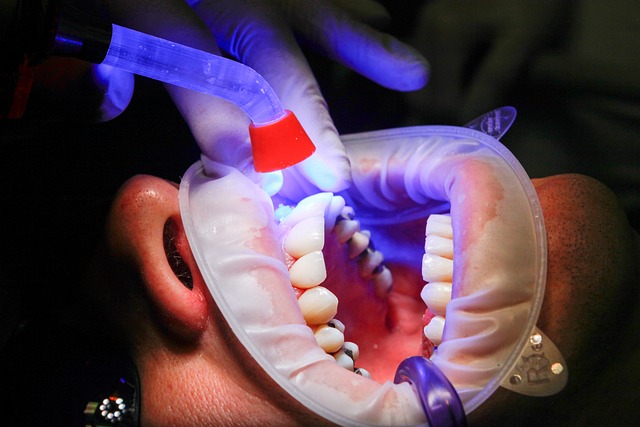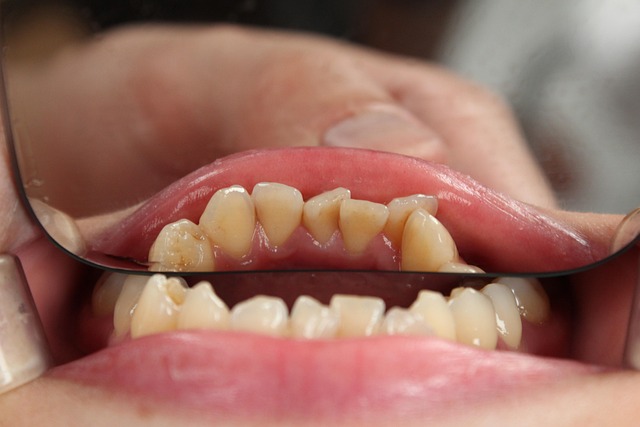Dentist liability coverage (malpractice insurance) protects dental professionals from financial losses & legal repercussions due to treatment errors or omissions. It covers negligence, accidents, and administrative mishaps, offering peace of mind for quality care delivery. Policies vary based on practice size, risks, and jurisdiction, with key components including general, malpractice, and professional liability. Balancing coverage limits, exclusions, and provider terms ensures tailored protection for dental practices.
For dentists, managing risks and ensuring adequate protection is paramount. This guide explores essential aspects of DDS-focused liability insurance, a crucial safety net in the high-stakes world of dentistry. We demystify dental practice coverage options, offering insights into understanding basic insurance principles, various policy types, risk management strategies, and legal considerations. Discover how to tailor your dentist liability coverage for customized protection that aligns with your unique practice needs.
- Understanding DDS Liability Insurance Basics
- Types of Dental Practice Coverage Options
- Risk Management Strategies for Dentists
- Comparing Policies: Limits and Exclusions
- Legal Considerations for DDS Coverage
- Getting Customized Dental Liability Protection
Understanding DDS Liability Insurance Basics

Dentist liability coverage, also known as dental malpractice insurance, is a crucial safety net for dentists and dental practices. It protects them from potential financial losses and legal liabilities arising from patient treatment errors or omissions. This type of insurance covers various aspects of dental practice, including negligence claims, accidents during procedures, and even administrative mistakes that may lead to legal repercussions.
When dentists opt for dentist liability coverage, they ensure that their practice is protected against a wide range of risks. The policy typically includes compensation for legal fees, court costs, and damages awarded to patients if the dentist or dental staff are found liable. Understanding the basics of this insurance is essential for dentists as it enables them to make informed decisions regarding their risk management strategy, ensuring peace of mind while providing quality dental care to their patients.
Types of Dental Practice Coverage Options

Dental practices come in various forms, from solo practices to large dental groups, each with unique needs for dentist liability coverage. The right insurance plan should cater to these differences and offer comprehensive protection tailored to the specific risks associated with different dental specialties. Generally, dental liability insurance covers professional negligence, errors, or omissions that result in harm to a patient. This includes instances like misdiagnosis, incorrect treatment plans, or accidental injury during procedures.
Key coverage options for dentist liability include general liability insurance, which protects against common claims; malpractice insurance, specifically designed to cover high-stakes dental mistakes; and professional liability insurance, focusing on errors and omissions. Additional specialized policies may address dental office property damage, business income loss, and even data breaches involving sensitive patient information. Each of these options plays a crucial role in safeguarding dentists from potential financial risks, ensuring they can practice without constant worry.
Risk Management Strategies for Dentists

Dentists, like any healthcare professionals, face unique risks in their practice. Implementing robust risk management strategies is essential to mitigate potential liabilities and protect their dental practices. One key component of risk management for dentists is acquiring adequate dentist liability coverage. This insurance safeguards against financial losses arising from medical malpractice claims, accidents, or injuries sustained by patients during treatment.
Effective risk management involves a multi-faceted approach. Dentists should maintain detailed records of patient treatments, ensure compliance with local regulations and health standards, regularly update their skills through continuing education, and foster open communication with patients about procedures and risks. By integrating these practices into their daily operations, dentists can enhance patient safety and reduce the likelihood of costly legal disputes, thereby strengthening their dental practice’s resilience in the face of potential liabilities.
Comparing Policies: Limits and Exclusions

When comparing dentist liability insurance policies, understanding the limits and exclusions is crucial for ensuring adequate dental practice protection. Limits refer to the maximum amount of compensation an insurance policy will cover in the event of a claim. Higher limits provide greater protection, especially considering the potential costs associated with complex legal cases or extensive damage. Exclusions, on the other hand, are specific circumstances or events not covered by the policy. Common exclusions in dentist liability coverage may include intentional acts, known pre-existing conditions, or certain types of professional negligence.
It’s essential to review these aspects carefully as they vary across different insurance providers and plans. Some policies might offer broader coverage with higher limits but come with stricter exclusions, while others could have lower limits but more inclusive terms. Balancing these factors ensures that you select a policy that aligns with your dental practice’s needs, mitigating risks and providing the necessary dentist liability coverage.
Legal Considerations for DDS Coverage

When considering dentist liability coverage, it’s crucial to understand the legal landscape surrounding dental practices. DDS-focused insurance policies are designed to protect dentists and their practices from potential claims and lawsuits, which can arise from various sources. These include negligence in treatment, malpractice, personal injury, or even professional errors that lead to patient harm.
The scope of dentist liability coverage varies based on jurisdiction and specific policy terms. Key legal considerations include adhering to local regulations, understanding the definition of ‘malpractice’ in dental practices, and ensuring the insurance policy provides comprehensive protection against common risks associated with dental care. Proper documentation, informed consent from patients, and adherence to industry standards are essential elements that can strengthen a dentist’s defense in the event of a claim, thereby enhancing their overall risk management strategy.
Getting Customized Dental Liability Protection

Many dental professionals often overlook the importance of tailored dental liability protection, but it’s an essential aspect of running a successful practice. Customized dentist liability coverage is designed to meet the unique needs of each dentist and their specific circumstances. This means that the policy can be adjusted to reflect factors such as the size of the practice, the types of procedures performed, and individual risk profiles.
By working with insurance providers who specialize in dental practices, dentists can secure comprehensive protection that covers various aspects of their work, including malpractice claims, legal fees, and settlement costs. Such tailored coverage ensures that dental professionals are shielded from potential financial burdens associated with accidents or errors during treatment.
